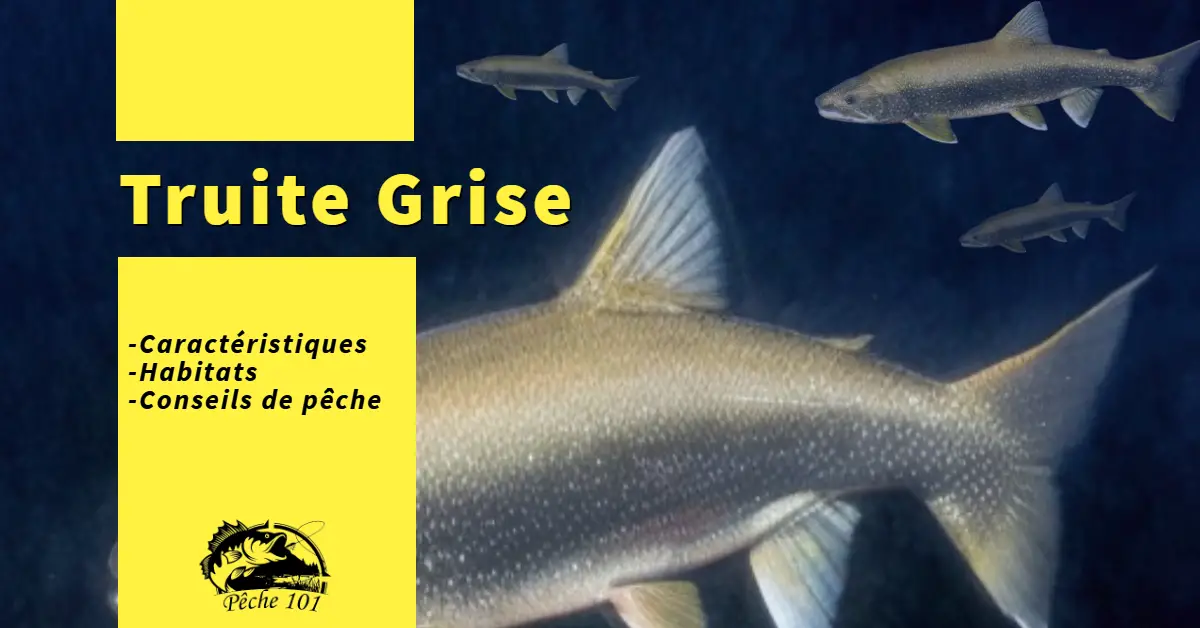The lake trout, also known as lake trout, is a freshwater fish of the char family, typical of large oligotrophic bodies of water in North America.
This combative salmonid lives mainly in deep, clear, well-oxygenated lakes, and is prized by anglers for its trophy-like qualities.
The gray trout's body is dark green with pale yellow spots.
It likes the cold, deep waters of lakes, which makes it a prime sport fishing animal.
Some 7,000 lake trout are caught annually in Sépaq's Quebec lakes, where anglers can even book specific lake trout fishing packages.
Article content
Basic information
A summary of lake trout
| Attribute | Information |
|---|---|
| Scientific name | Salvelinus namaycush |
| Common names | Lake Trout, Lake Trout, Lake Trout |
| Power supply | Carnivorous - Feeds mainly on smaller fish such as whitefish, but also insects and crustaceans. |
| Native range | North America, mainly in deep lakes in the northern regions of the United States, Canada and Alaska. |
| Preferred environment | Cold, deep waters of lakes and reservoirs. |
| Preferred water temperature | Between 4 and 11 degrees Celsius |
| Temperature tolerance | Tolerates a range of temperatures but prefers cold water. |
| Average life expectancy | Up to age 20 or over under certain conditions |
| Medium size | Generally 40 to 80 centimetres in length |
| Average weight | From 0.5 to 2.5 kg, but some specimens can exceed 10 kg. |
Lake trout identification
The lake trout is a freshwater fish of the char family.
It is generally larger than speckled trout and has tasty flesh.
To recognize the gray trout, you can observe its colors: it has a silvery hue with shades of green and brown.
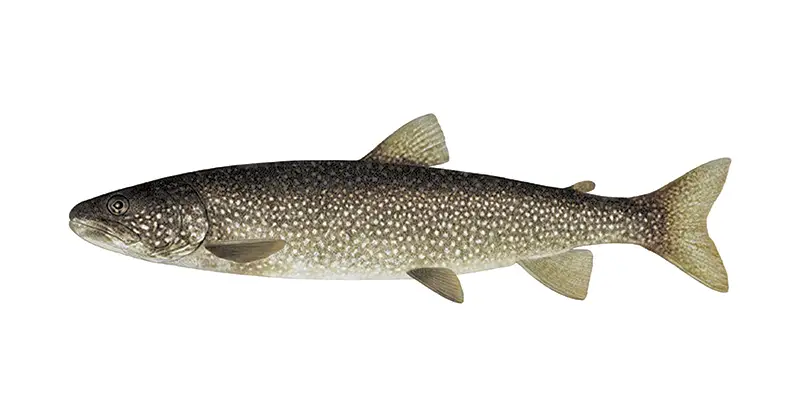
Distribution and Housing
The lake trout is mainly found in North America, particularly Canada, but also in Europe.
This fish needs deep, clear, well-oxygenated water.
The lake trout lives mainly in deep lakes, typical of large oligotrophic bodies of water.
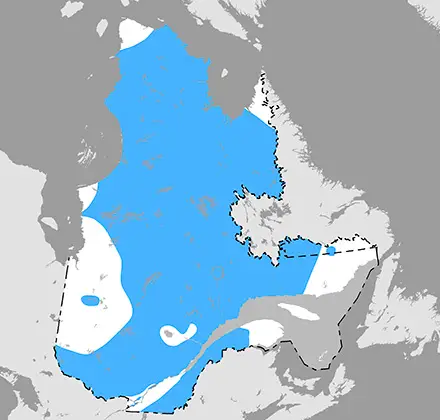
Lake trout can be found in over 1,000 bodies of water in Quebec.
Power supply
The lake trout is an active fish when the water is cold.
It feeds mainly on smelts, ciscos and other small fish.
In spring, when the water is still cold, lake trout are more likely to approach the surface, offering fly-fishing opportunities.
During the summer, when the water warms up, it takes refuge further down (30′ to 90′) and occasionally rises to the surface to feed.
Fishing Techniques
Angling
To line fish for lake trout, you'll need a light action fishing rod. A 0.2 to 0.24 mm line is recommended, as it allows you to carry out different fishing techniques with ease.
The thinner line offers less friction with the water, making it easier to cast to deeper areas of the lake.
Angling allows you to experiment with different methods of catching lake trout. Here are a few angling techniques you can try:
- Visit dandinette (also known as "jig" fishing): This technique consists of alternating rod movements and releases to give the lure a natural swimming action.
- Use of lures : Lures are objects that imitate natural prey, such as small fish, to attract lake trout. Popular lures include the Bomber Long A, which perfectly imitates the swim of a small fish.
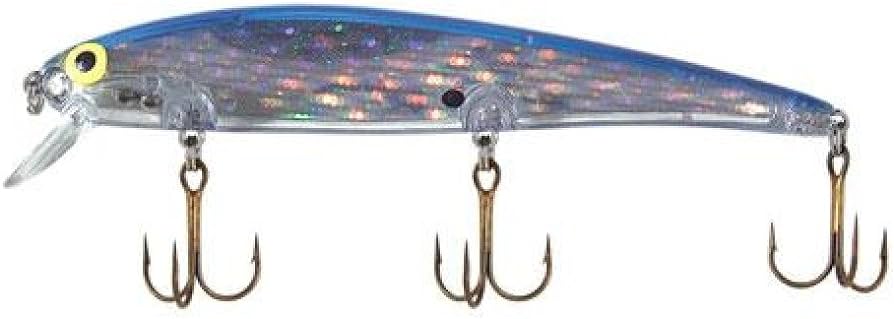
Troll fishing
Trolling is another common technique for catching lake trout.
It involves towing a lure or bait behind a moving boat.
This method allows you to cover a larger area of water, increasing your chances of catching lake trout.
Here are a few tips for trolling:
- Vary the boat speed : Grey trout are known to be combative fish, so alternating between different trolling speeds may encourage them to bite. Try oscillating your speed between 0.5 and 2.5 mph.
- Choose their adapted Some lures are more effective for trolling. See below for suggestions.
Equipment and Lures
Rod and Reel
When it comes to fishing for lake trout, proper equipment is essential.
A light casting rod is recommended, ideally between 6.6 and 7 feet long. This medium-powered rod should have a fast moderate action.
However, for those who specifically prefer trolling, a 7-foot rod with moderate action would be more appropriate.
For the reel, a model between 2500 and 3000 is recommended.
Multi-purpose rods are available for both trolling and jigging.
As far as line is concerned, we recommend using a 15 or 20-pound braided line. A fluorocarbon leader with a resistance of 10 to 12 pounds is also a good choice.

This material has the advantage of being almost invisible in the water and offers increased abrasion resistance, which is particularly useful for jigging.
Lures and Baits
Visit lure selection and baits for lake trout depends on the time of year and fishing technique. Here are some lure and bait options you can use effectively:
- Spinning spoons They are particularly effective, imitating the movement of a small wounded fish. Lake trout are attracted by this type of easy-to-catch prey.
- Swimming fish These lures are ideal for periods when lake trout are found deeper in the water. Choose models with a high dorsal fin to encourage fish to bite.
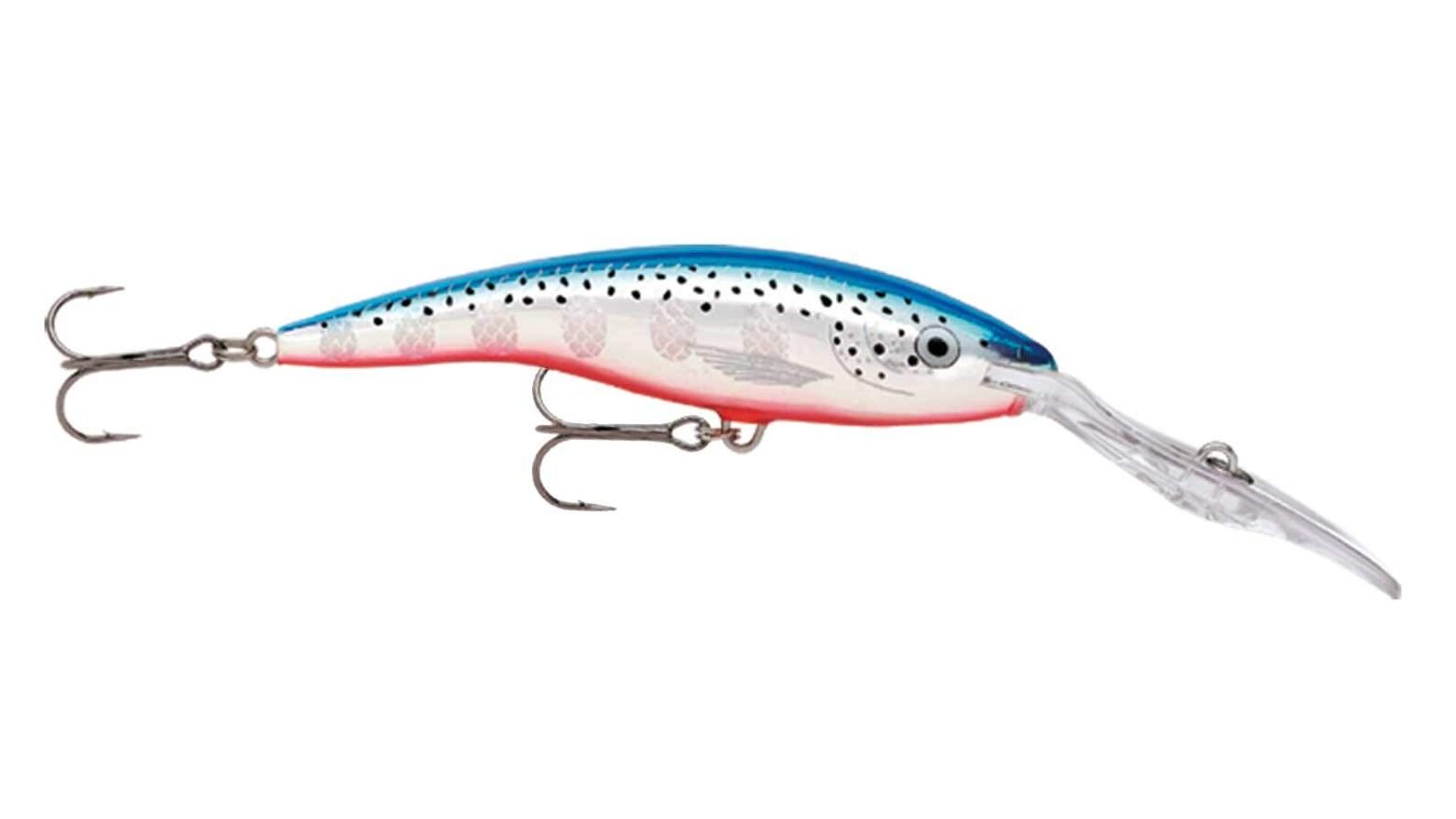
- Plastic soft lures They are very versatile and can be used in a variety of grey trout fishing situations. You can jig them, drag them or present them on the surface.
- To : Lake trout like to feed on worms, especially at the beginning of the season. Use real worms or plastic worm imitations to attract them.
- Menés These small fish are also excellent bait for lake trout. You can use them live or dead, by attaching them to a hook or combining them with a soft lure.
Fishing seasons
Summer fishing
During the summer, fishing for lake trout is an excellent leisure activity for those who love to fish. sport fishing in Quebec.
During the summer season, water temperature has a major influence on the depth at which lake trout are found. They can be as much as 90′ deep.
In general, the warmer the water, the deeper you should fish. Remember to adapt your fishing technique to the time of day and the season.
Winter fishing
Lake trout fishing can also be enjoyed in winter, when the lakes are covered in ice.
Ice fishing offers a unique experience and allows you to enjoy the pleasures of fishing all year round.
The steps for ice fishing are similar to those for summer fishing, with a few adjustments to take account of winter conditions.
For a successful winter fishing trip, make sure you're well equipped and follow these tips:
- Wear warm, weather-appropriate clothing.
- Use a light-action rod with 0.2 to 0.24 mm line for easy casting into deep areas of the lake.
- Adapt your technique and the depth at which you fish according to water temperature and the presence of ice. Gray could be found in shallower areas from 3′ to 20′.
- Be agile and watch for signs of grey trout.
By following these tips, you'll maximize your chances of success when fishing for lake trout in all seasons.
Fishing spots
Réserve Faunique du Saint-Maurice
Visit Réserve Faunique du Saint-Maurice is a renowned spot for lake trout fishing.
Many cottages and lakes are available for this activity in different regions of Quebec, including the Saint-Maurice region.

Sépaq, which manages these facilities, offers the ideal setting for you to enjoy your fishing experience to the full.
In this reserve, you can fish for beautiful specimens of lake trout while surrounded by magnificent nature.
Be sure to follow local regulations to respect catch limits and help preserve this species.
Mauricie region
Visit MauricieThere are several fishing destinations offering access to lake trout.
Among them, the Némiskau Outfitterlocated in La Tuque, is distinguished by its two lakes rich in lake trout: Lac Rose and Lac Pal. In 2018, a 12-pound lake trout was caught at this outfitter, attesting to the quality of the site for this activity.
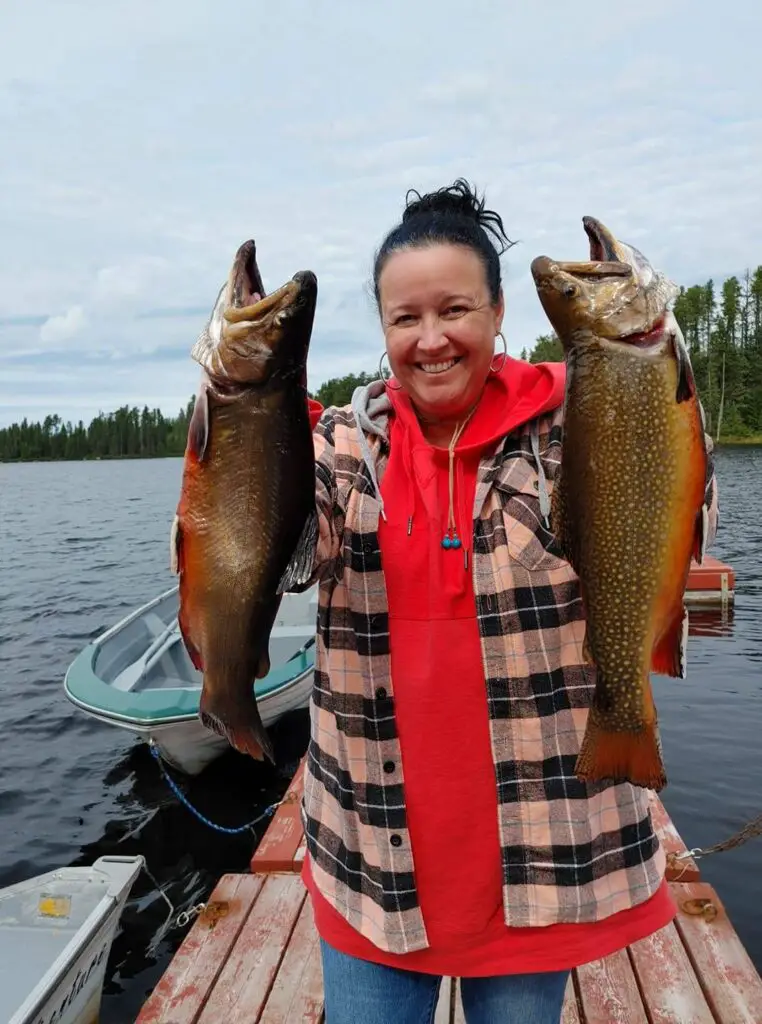
In addition to fishing, you can enjoy massage therapy, a sauna and their 5 spas to relax after a day on the water.
Don't hesitate to explore other fishing areas in the Mauricie region to discover the richness of its waterways.
Grey Trout Recipes
Lake trout is a delicious, healthy fish that can be prepared in a variety of ways. Here are a few recipes for preparing and enjoying this delicious fish.
Lake trout with white wine : To make this recipe, you'll need grey trout, smoked paprika, butter, lemon, fresh oregano and white wine. The flavors come together beautifully, creating a succulent main course. You can find this recipe at "The Gourmet Confession".
Grey trout nuggets with maple syrup This original recipe is perfect for an aperitif. It consists of grey trout nuggets coated in maple syrup. You can find this tasty recipe on the "Radio-Canada.ca".
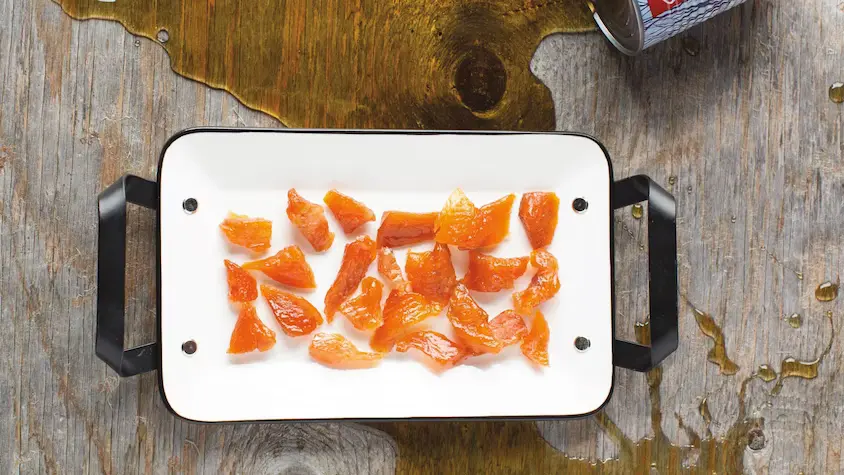
Generally speaking, lake trout is a versatile fish that can be prepared in many different ways, like rainbow and salmon trout.
It's important to remember that this fish is an excellent source of omega-3 fatty acids, protein, selenium and B vitamins.
Regulations and Permits
Fishing Permits in Canada
To practice sport fishing for lake trout in Quebec, it is important to respect the following rules. regulations and permits in force. First, you need to obtain a fishing permit to fish legally.
Fishing licenses are available in several types and durations, depending on your needs. You can obtain an annual, monthly, weekly or even daily license. Quebec residents and non-residents have different rates for permits. Make sure you choose the right license for your situation, and respect the terms and conditions. limits and size of lake trout.
It is crucial to take into account periods, limits and exceptions applicable to the site where you wish to fish. The interactive map and search filters available on the Quebec government website can help you obtain this information. You can also consult official regulatory sources to find out what's new each year, usually published on April 1.

Visit https://mffp.gouv.qc.ca/la-faune/plans-de-gestion/touladi/ for more info.
Here are some key points to consider when fishing for lake trout in Quebec:
- Comply with general sport fishing regulations
- Obtain a valid fishing license
- Follow grip and size limits
- Identify periods, limits and exceptions applicable to the fishing site
- Familiarize yourself with how to measure, fillet and identify fish, in accordance with the rules in force.
Comparison with other species
Lake trout vs. salmon
The lake trout, also known as lake trout (Salvelinus namaycush), is a freshwater fish of the char family, typical of large oligotrophic bodies of water in North America.
Salmon, on the other hand, belongs to the genus Oncorhynchus and is found in Pacific watersheds.

Lake trout are generally grayish in color, while salmon often have silvery or pinkish hues.
When it comes to fishing, lake trout prefer cold, deep waters, while salmon migrate between fresh and salt water throughout their lives.
Fishing techniques also vary according to species, with lake trout caught with deep lures, while salmon can be fished with flies or trollers.
Lake Trout vs. Walleye
Walleye (Sander vitreus) is another freshwater fish species very popular with fishermen.
Although they share a similar habitat with lake trout, there are several distinct differences between the two species.
Walleye are yellowish or golden in color, with black spots on their sides. Grey trout, on the other hand, have light, yellowish or beige spots on a darker background.
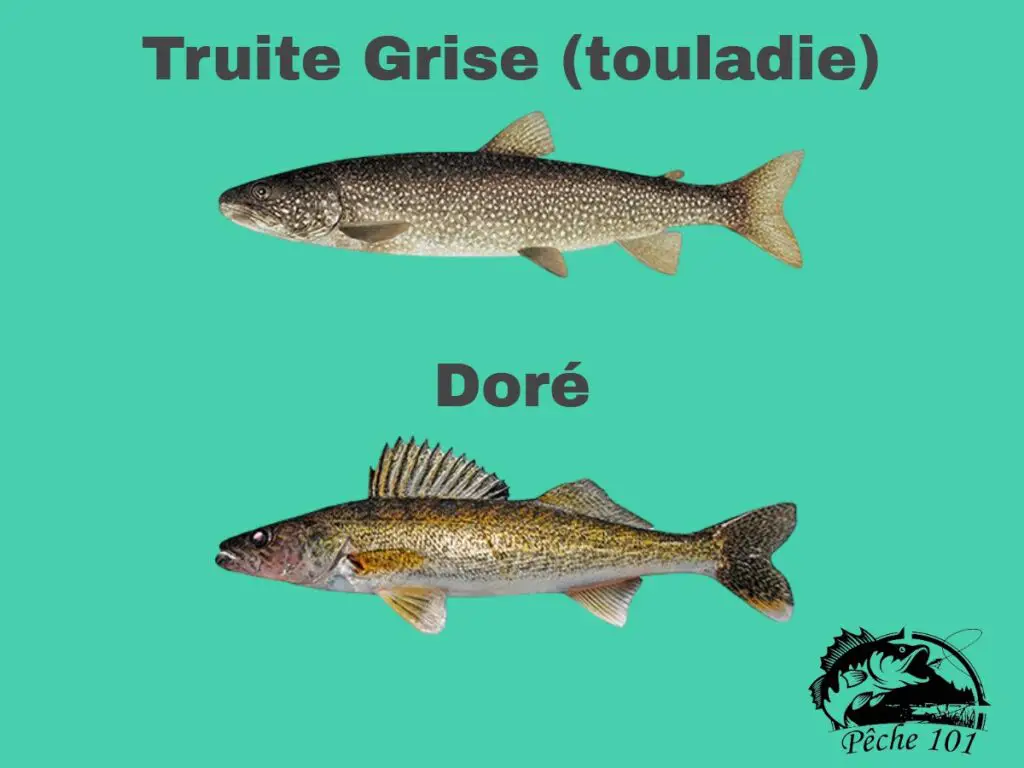
When fishing, lake trout prefers cold, deep waters, while walleye is generally found in more temperate, shallower waters.
Fishing techniques also vary, with lake trout being caught using deep lures and walleye being caught using techniques such as trolling or jigging.
Lake trout vs. speckled trout
The speckled trout (Salvelinus fontinalis) belongs to the same family as the lake trout, but with a few notable differences.
Speckled trout have a greenish to reddish-brown background, with red spots surrounded by blue circles. Whereas lake trout have light, yellowish or beige spots on a generally grayish background.

In terms of habitat, brook trout generally live in streams and rivers.
The lake trout is most frequently found in large oligotrophic lakes and ponds.
Fishing techniques for these two species sometimes overlap, notably the use of lures and flies. However, speckled trout are often caught on flies in rivers and streams, while lake trout are caught in deep water in lakes.
Frequently asked questions about lake trout
What is the record size for lake trout?
In Quebec, the record is a 36 kg lake trout caught in Lake Mistassini. Source: Government of Quebec
At what depth can you find lake trout?
Lake trout, also known as lake trout, are generally found in deep lakes and can be found in depths of up to 90′. This combative salmonid requires deep, clear, well-oxygenated water to live.
What are the best lures for lake trout?
- Bomber Long A
- Elongated lure imitating a small fish, ideal for trolling and casting.
- Williams Wabler
- An erratic spoon that has been pleasing fish for over a century.
- Ripple Shad
- Soft lure segmented to create vibrations, impregnated with a scent formula.
- Dartee spoon
- Offers a realistic imitation of forage fish with a silver finish.
- Mister Twister 6 inch
- Soft lure for targeting shallow-water fish, with undulating tail.
- Bully
- Heavy metal lure, ideal for trolling at various speeds.
- Heddon Sonar
- Vibrating blade with three attachment points for different fishing techniques.
- Yum Pulse
- Soft lure with arched ribs for contorted swimming.
- HQ35
- Spoon with UV-reactive polychrome finish and honeycomb embossing.
- Suspending Rattlin' Rogue
- A lure with an accentuated swimming action and the ability to suspend in the water.
